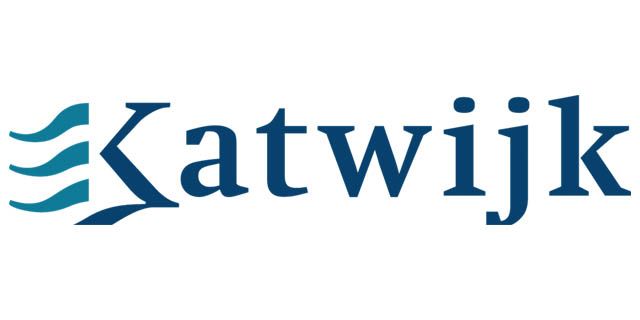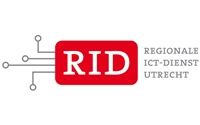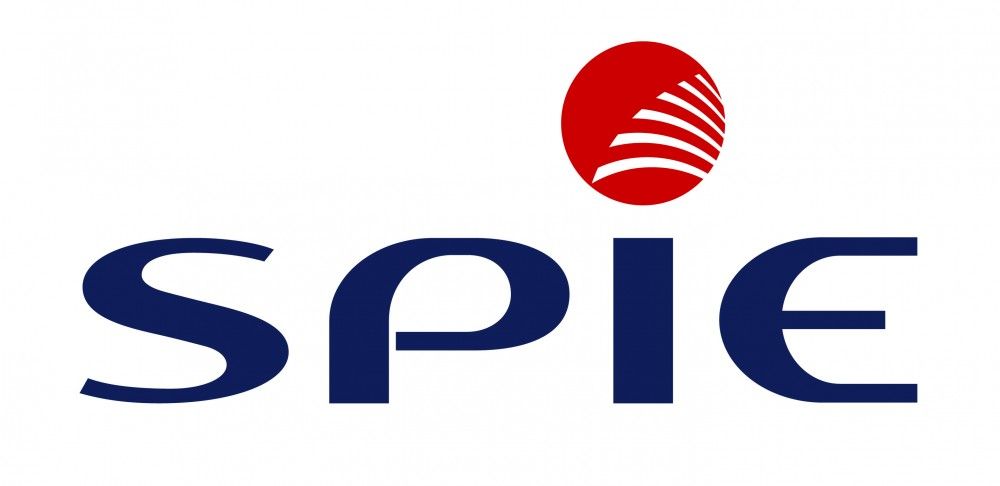Cursusbeschrijving
This 5-day instructor-led course teaches IT professionals how to administer and support Exchange Server 2016. Students will learn how to install Exchange Server 2016, and how to configure and manage an Exchange Server environment. The course covers how to manage mail recipients and public folders, including how to perform bulk operations using Exchange Management Shell. Students also will learn how to manage client connectivity, message transport and hygiene, how to implement and manage highly available Exchange Server deployments, and how to implement back up and disaster recovery solutions.
The course also teaches students how to maintain and monitor an Exchange Server 2016 deployment. In addition, students will learn how to administer Exchange Online in an Office 365 deployment.
{tab Doelgroep}
This course is primarily intended for people aspiring to become enterprise-level messaging administrators for Exchange Server 2016. IT generalists and help-desk professionals who want to learn about Exchange Server 2016 might also take this course.
Students taking this course are expected to have at least two years of experience working in the IT field—typically in the areas of Windows Server administration, network administration, help desk, or system administration. They are not expected to have experience with previous Exchange Server versions.
The secondary audience for this course includes IT professionals who take this course as preparation material for exam 70-345: Designing and Deploying Microsoft Exchange Server 2016, or as part of the requirement for the MCSE: Microsoft Exchange Server 2016 certification. {tab Voorkennis}
- A minimum two years of experience administering Windows Server, including Windows Server 2012 R2 or Windows Server 2016
- A minimum two years experience working with Active Directory Domain Services (AD DS).
- A minimum two years of experience working with name resolution, including Domain Name System (DNS)
- Understanding of TCP/IP and networking concepts.
- Understanding of Windows Server 2012 R2 or later, and AD DS, including planning, designing, and deploying.
- Understanding of security concepts such as authentication and authorization.
- Understanding of Simple Mail Transfer Protocol (SMTP).
- Working knowledge of public key infrastructure (PKI) technologies, including Active Directory Certificate Services (AD CS)
These requirements can be met by attending course M20410, Installing and Configuring Windows Server 2012 and M20411, Administering Windows Server 2012.
{tab Certificering} Deze cursus bereidt u voor op het examen 70-345 {tab Vervolgcursussen} Logisch vervolg na deze cursus is de 20342B: Designing and Deploying Microsoft Exchange Server 2016 {tab Overige informatie}
This course will be delivered with digital courseware. In order to have the best learning experience you are asked to bring your own second screen to view the courseware. A second screen includes: tablets and laptops.
{/tabs} {slider Cursusinhoud|closed}Module 1: Deploying Microsoft Exchange Server 2016
This module describes the key features and enhancements in Exchange Server 2016, in addition to the deployment requirements and options.
- Overview of Exchange Server 2016
- Requirements and deployment options for Exchange Server 2016
Lab : Deploying Microsoft Exchange Server 2016
- Evaluating requirements and prerequisites for an Exchange Server 2016 installation
- Deploying Exchange Server 2016
After completing this module, students will be able to:
- Describe the features and functionality of Exchange Server 2016.
- Describe the requirements and deployment options for Exchange Server 2016.
Module 2: Managing Microsoft Exchange Server 2016 servers
This module describes the Exchange Server 2016 management tools, the features of a Mailbox server, and how to configure a Mailbox server.
- Exchange Server 2016 management
- Overview of the Exchange 2016 Mailbox server
- Configuring Mailbox servers
Lab : Configuring Mailbox servers
- Creating and configuring mailbox databases
- Deploying Exchange Server 2016
After completing this module, students will be able to:
- Describe the management tools and features in Exchange Server 2016.
- Describe the features and functionality of the Mailbox Server role.
- Configure the Mailbox server role.
Module 3: Managing recipient objects
This module describes the types of recipient objects in Exchange Server 2016, and explains how to manage these objects. The module also describes how to manage address lists and policies on the Mailbox server role.
- Exchange Server 2016 recipients
- Managing Exchange Server recipients
- Managing address lists and policies on the Mailbox server role
Lab : Managing email address policies and address book policies
- Managing recipients
- Managing public folder mailboxes
- Managing Exchange Server email address policies
- Managing address lists and address book policies
Lab : Managing recipients and public folder mailboxes
- Managing recipients
- Managing public folder mailboxes
- Managing Exchange Server email address policies
- Managing address lists and address book policies
After completing this module, students will be able to:
- Describe the different types of recipients.
- Manage Exchange Server email address policies.
- Manage address lists and address book policies.
- Manage public folder mailboxes.
Module 4: Managing Microsoft Exchange Server 2016 and recipient objects by using Exchange Management Shell
This module provides an overview of the Exchange Management Shell, and describes how to use it to manage Exchange Server 2016.
- Overview of the Exchange Management Shell
- Managing Exchange Server 2016 by using Exchange Management Shell
Lab : Managing Exchange Server and recipient objects by using Exchange Management Shell
- Using Exchange Management Shell to manage recipients
- Using Exchange Management Shell to manage Exchange Server
After completing this module, students will be able to:
- Describe the purpose and functionality of Exchange Management Shell.
- Manage Exchange Server 2016 by using the Exchange Management Shell.
Module 5: Implementing client connectivity
This module describes how to configure and manage Client Access Services in Exchange Server 2016. The module also explains the options for configuring client connectivity, Microsoft Outlook on the web, and mobile messaging.
- Configuring client access services in Exchange Server 2016
- Managing client services
- Client connectivity and publishing of Exchange Server 2016 services
- Configuring Outlook on the web
- Configuring mobile messaging on Exchange Server 2016
Lab : Deploying and configuring client access services on Exchange Server
- Configuring certificates for client access
- Configuring client access options
- Configuring custom MailTips
- Configuring Outlook on the web
- Configuring Microsoft Exchange ActiveSync
Lab : Deploying and configuring client access services on Exchange Server 2016
- Configuring certificates for client access
- Configuring client access options
- Configuring custom MailTips
- Configuring Outlook on the web
- Configuring Microsoft Exchange ActiveSync
After completing this module, students will be able to:
- Configure client access services in Exchange Server 2016.
- Manage client services.
- Describe the options for client connectivity and publishing of Exchange Server 2016 services.
- Configure Outlook on the web.
- Configure mobile messaging on Exchange Server 2016.
Module 6: Managing Microsoft Exchange Server 2016 high availability
This module describes the high availability options in Exchange Server 2016. The modules also explains how to configure high availability for Mailbox databases and Client Access Services.
- High availability on Exchange Server 2016
- Configuring highly available mailbox databases
- Configuring high availability of client access services.
Lab : Implementing and testing high availability
-  Creating and configuring a database availability group
- Deploying a high availability solution for client access services
- Testing the high availability configuration
Lab : Implementing database availability groups
-  Creating and configuring a database availability group
- Deploying a high availability solution for client access services
- Testing the high availability configuration
After completing this module, students will be able to:
- Describe the high availability options in Exchange Server 2016.
- Configure highly available mailbox databases.
- Configure highly available client access services.
Module 7: Implementing disaster recovery for Microsoft Exchange Server 2016
This module describes the backup and recovery options in Exchange Server 2016.
- Implementing Exchange Server 2016 backup
- Implementing Exchange Server 2016 recovery
Lab : Implementing disaster recovery for Exchange Server 2016
- Backing up Exchange Server 2016
- Restoring Exchange Server 2016 data
- Recovering a member of the database availability group (Optional)
After completing this module, students will be able to:
- Implement Exchange Server 2016 backup.
- Implement Exchange Server 2016 recovery.
Module 8: Configuring message transport
This module provides an overview of message transport, and describes how to configure and manage message transport.
- Overview of message transport
- Configuring message transport
- Managing transport rules
Lab : Configuring message transport
- Configuring message transport
- Troubleshooting message delivery
- Configuring transport rules and data loss prevention policies
After completing this module, students will be able to:
- Describe the features of message transport in Exchange Server 2016.
- Configure message transport.
- Manage transport rules.
Module 9: Configuring message hygiene and security
This module describes the key features and functionality of and Edge server in Exchange Server 2016. The module also explains how to implement an antivirus and anti-spam solution.
- Deploying and managing Edge server for message security
- Implementing an antivirus solution for Exchange Server 2016
- Implementing an antispam solution for Exchange Server 2016
Lab : Configuring message security
- Deploying an Exchange Server 2016 Edge server
- Configuring message hygiene features on Exchange Server 2016
After completing this module, students will be able to:
- Deploy and manage Edge server for message security.
- Implement an antivirus solution for Exchange Server 2016.
- Implement an anti-spam solution for Exchange Server 2016.
Module 10: Implementing and managing Microsoft Exchange Online deployments
This module describes the key features of Exchange Online and Office 365. The module also describes how to manage and migrate to Exchange Online.
- Overview of Exchange Online and Office 365
- Managing Exchange Online
- Implementing the migration to Exchange Online
Lab : Managing Exchange Online
- Creating the Office 365 Trial Tenant
- Managing recipient objects and Exchange Server settings in Office 365
After completing this module, students will be able to:
- Describe the features of Exchange Online and Office 365.
- Manage Exchange Online.
- Implement the migration to Exchange Online.
Module 11: Monitoring and troubleshooting Microsoft Exchange Server 2016
This module describes how to monitor and troubleshoot Exchange Server 2016.
- Monitoring Exchange Server 2016
- Troubleshooting Exchange Server 2016
Lab : Monitoring and troubleshooting Exchange Server 2016
- Monitoring Exchange Server
- Troubleshooting database availability
- Troubleshooting client access services
After completing this module, students will be able to:
- Monitor Exchange Server 2016.
- Troubleshoot Exchange Server 2016.
Module 12: Securing and maintaining Exchange Server 2016
This module describes how to plan and configure administrative security and administrative auditing in Exchange Server 2016.
- Securing Exchange Server with role-based access control
- Configuring audit logging on Exchange Server 2016
- Maintaining Exchange Server 2016
Lab : Securing and maintaining Exchange Server 2016
- Configuring Exchange Server permissions
- Configuring audit logging
- Maintaining updates on Exchange Server 2016.
After completing this module, students will be able to:
- Secure Exchange Server 2016 with role-based access control (RBAC).
- Configure audit logging on Exchange Server 2016.
- Maintain Exchange Server 2016.
{slider Doelstellingen}
After completing this course, students will be able to:
- Perform deployment and basic management of Exchange Server 2016.
- Manage Exchange Server 2016.
- Create and manage various recipient objects in Exchange Server 2016.
- Use Exchange Management Shell to create and manage various recipient objects in Exchange Server 2016, and perform various tasks to automate Exchange management procedures.
- Configure client connectivity to Exchange Server 2016, and manage Client Access services.
- Implement and manage high availability.
- Implement backup and disaster recovery for Exchange Server 2016.
- Configure message transport options.
- Configure message hygiene and security options.
- Implement and manage Exchange Online deployments.
- Monitor and troubleshoot Exchange Server 2016.
- Secure and maintain Exchange Server 2016.
{/sliders}
Kosteloze inspiratiesessies
Sorry, we konden geen berichten vinden. Probeer andere zoekterm(en).
Schrijf je in voor onze nieuwsbrief!
En blijf op de hoogte van nieuwe gratis inspiratiesessies, trainingen, tips en tricks of leuke aanbiedingen! Schrijf je in door je e-mailadres hieronder in te vullen:
Wij houden niet van spam: onze nieuwsbrief is puur bedoeld om op de hoogte te blijven van nieuwe ontwikkelingen bij Westhaghe.



























